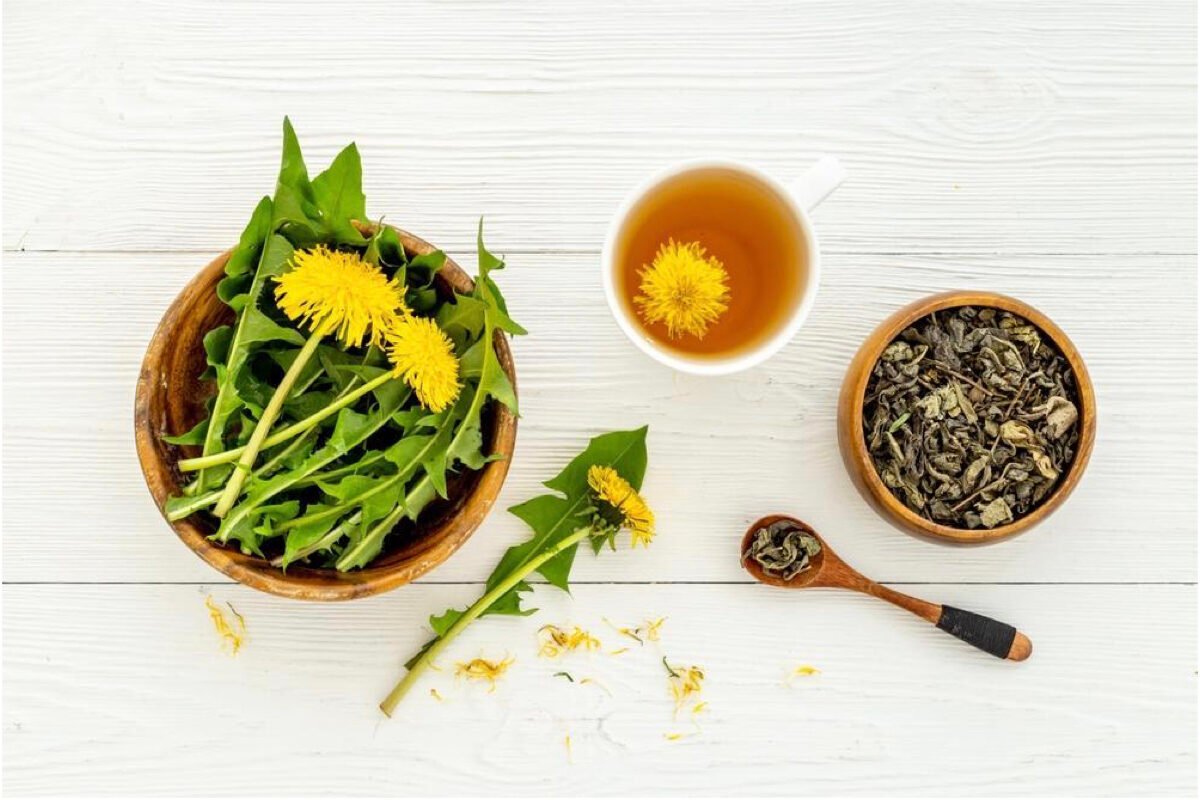Dandelion Possesses All Attributes as Medicine and Food, a Popular Ingredient for Springtime Liver Protection
While many flowers are reborn in spring—dandelions, shining their telltale yellow blossoms—can be seen ubiquitously along hillsides, fields, and roads. Apart from being an enjoyable view, dandelion has been used over centuries as a medicinal herb. It has a variety of effects such as diuretic, anti-inflammatory, clearing the liver and eyes, and can also be enjoyed as a food, prepared in a variety of ways.
Liu Chun, a Doctor of Medicine at the University of Tokyo, Japan, said that in spring, we should pay attention to nourishing and protecting the liver, and dandelion is one of the best ingredients to use.
Dandelion belongs to the chrysanthemum species, and its medicinal attributes come from its roots, leaves, and flowers. It contains a variety of nutrients, including vitamins A, C, and K, and minerals such as calcium, magnesium, phosphorus, and potassium.
Traditional Chinese medicine (TCM) believes that it is also a non-toxic herb, with the benefits of enhancing the liver (promoting bile secretion), and has diuretic, anti-rheumatism, and anti-inflammatory characteristics.
In 2010, a study published in the Internal Journal of Molecular Sciences mentioned that in folk medicine, dandelion was used to treat liver disease, inflammation, and various women’s diseases such as breast, and uterine cancer.
The study found that in rabbits fed with a high-cholesterol diet the roots and leaves of dandelion potentially reduced blood lipids and antioxidant effects, which is conducive to preventing risk factors causing high cholesterol atherosclerosis and reducing coronary arterial diseases.
Dandelion Helps Nourish the Liver in Spring
Chun told The Epoch Times that TCM follows the theory of the five elements of “wood, fire, earth, metal, and water,” and there is a “pro and counter” relationship among each of them.
The five elements are related to the five internal organs “liver, heart, spleen, lungs, and kidneys,” which are in turn linked to the yin and yang of the four seasons of nature. During spring, “wood” is the dominant element of the five. And while the liver also belongs to the wood, it means the liver controls spring and is going hand-in-hand with the progress of springtime.
Liu said spring is full of life and vitality, and the blood within the whole body relies on the liver’s drainage function to move it around the body. When the liver qi (vital energy) is going strong, the liver tends to become hyperactive, and symptoms such as dizziness, or when the “head feels like it’s swimming,” and tinnitus, often occur.
People suffering from chronic liver disease might see its severity increase in spring too. It is then worth paying extra attention to the nourishment of the liver.
Spring is the best season to nourish the liver. When the liver is clean, the intestines are relaxed, and health in the year ahead will become more enjoyable.
In particular, the middle-aged and elderly are prone to irritability in spring and symptoms such as vivid dreaming or insomnia, dry mouth, and tongue discomfort are all manifestations of liver hyperactivity (excessive liver qi). When the excessive liver qi is not cleared, it will also affect the health of the cardiovascular and cerebrovascular systems.
TCM found that the meridians are the channels of human energy responsible for transporting qi and blood around the whole body. They are substances that constitute the body and maintain all physiological activities.
There are 12 main meridians in the human body corresponding to the 12 internal organs. Meridians connect all the organs, limbs, five sense organs, and nine body orifices—they communicate interior, exterior, and upper and lower sides of the body.
Liu said that in TCM theory, dandelion belongs to the liver and stomach meridian, it is regarded as a magnificent ingredient for nourishing the liver.

Dandelion’s Medicinal Efficacy
Japanese pharmacist and TCM practitioner Akiko Nakagaki wrote that dandelion has the following benefits.
1. Clears the liver and eyes: Dandelion is beneficial in detoxifying the liver and can be used to treat pain caused by the eyes’ blood congestion, swelling, and acute conjunctivitis caused by liver problems.
2. Clears heat and detoxification: Using dandelion alone or combined with other medicinal herbs with detoxifying effects can treat symptoms such as lumps, fever, and swelling in the early stage of mastitis.
3. Treatment of skin purulence: Dandelion has antibacterial effects and can be used to treat skin diseases such as acne and atopic dermatitis. It can also be applied topically to the wounds of snake or worm bites.
4. Diuretic: Dandelion has a diuretic effect and can be combined with other Chinese medicinal herbs to treat urination difficulty and pain due to urinary tract infections.
Dandelion Avoidance Group(s)
Nakagaki said that dandelion belongs to the heat-clearing and detoxifying classification of drugs and will cool down the body. Therefore, people who are afraid of cold should not use dandelion alone. Because different people have different physiques, it is recommended to consult your doctor or TCM experts before using dandelion
Dandelion Dietary Use
Eric Berg, an American spine therapist and intermittent fasting expert, introduced in his YouTube video that dandelion consumption is not just restricted to its leaves but should include the whole of it, even the root.
Roasted dandelion roots taste like coffee and can be used as a coffee substitute. Dandelion leaves are quite bitter and can be combined with other vegetables in salads. Dandelion flowers can also be added to salads or tea.
Berg said that dandelion is a plant with a high degree of vitality. Its root can go very deep underground and thus absorbs many minerals from the soil. In that case, eating all parts of the dandelion is likely to bring more nutrition.




